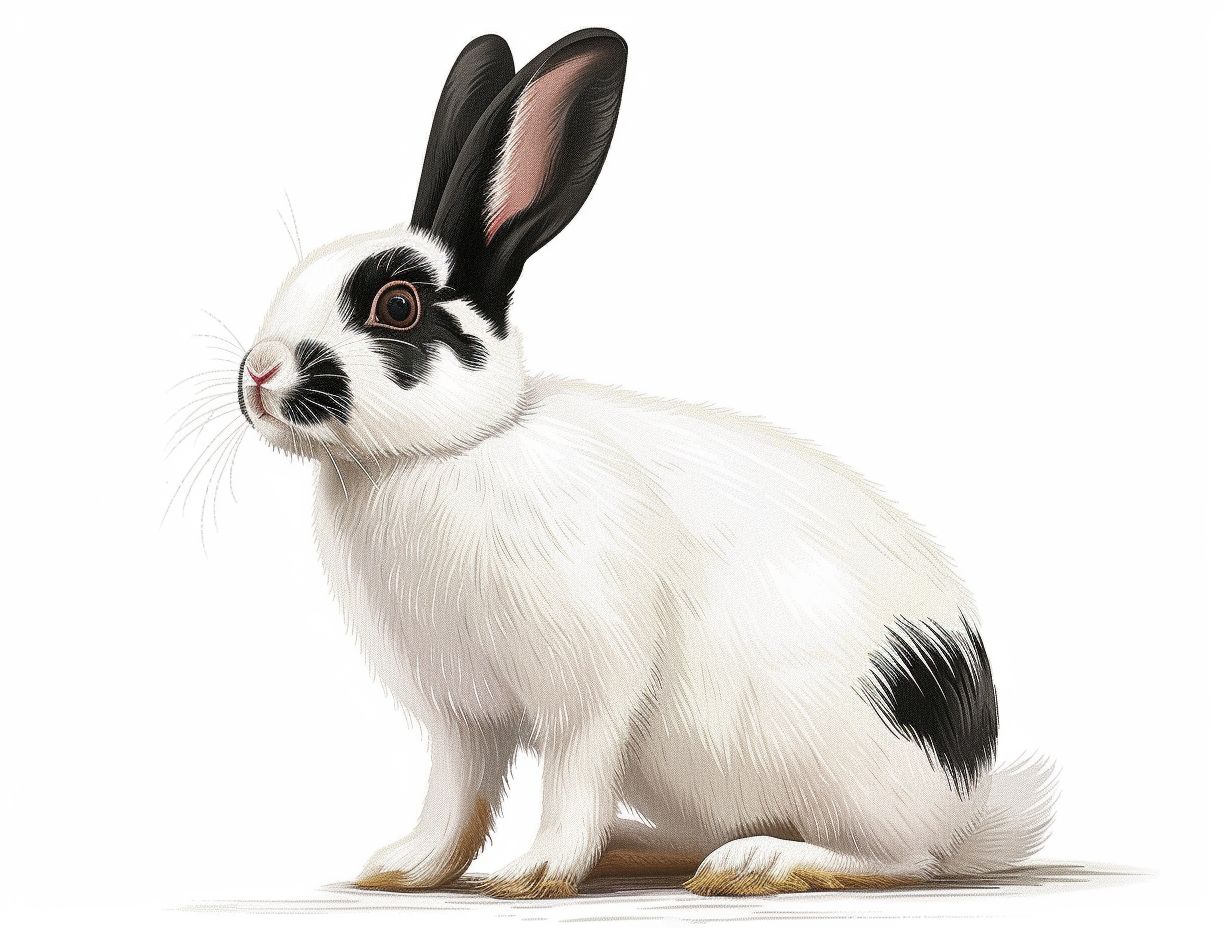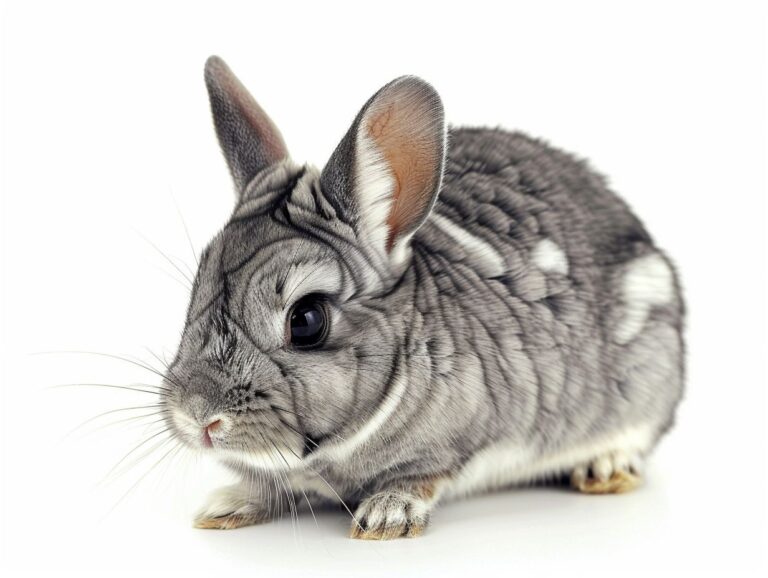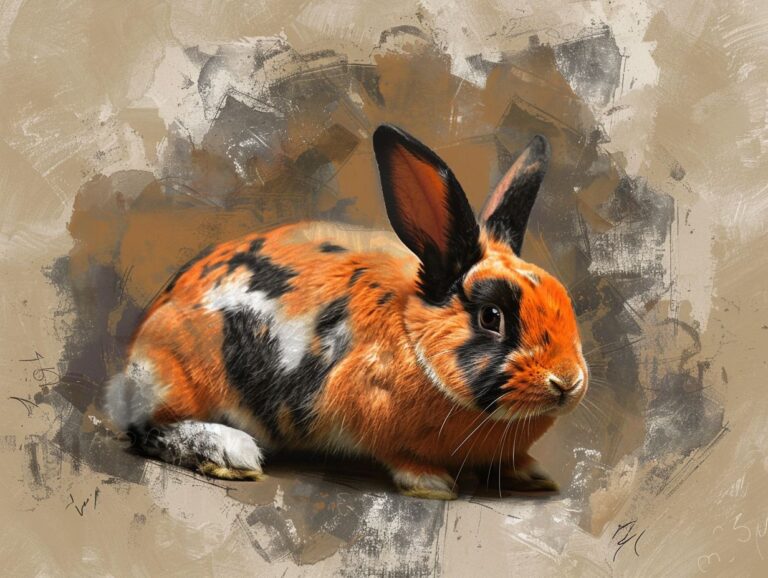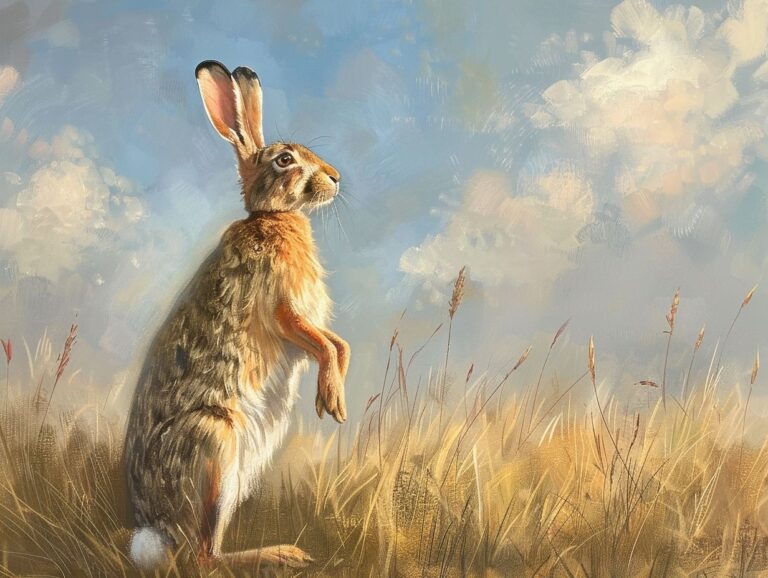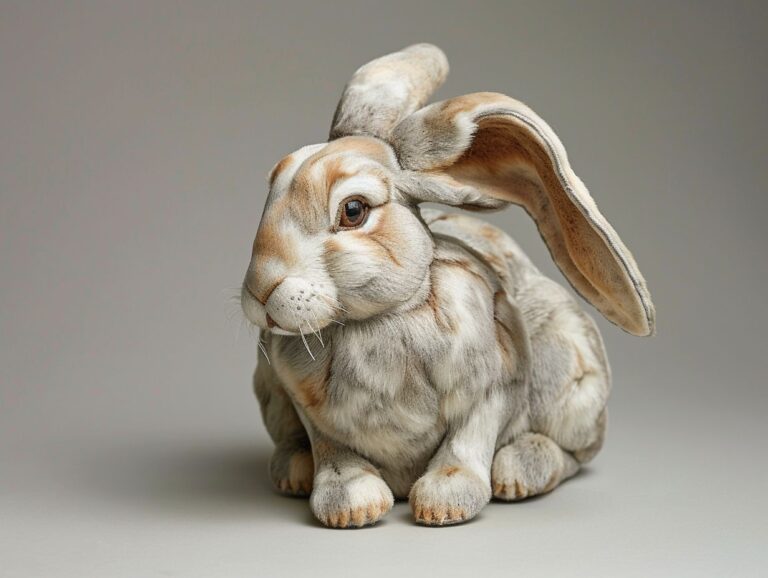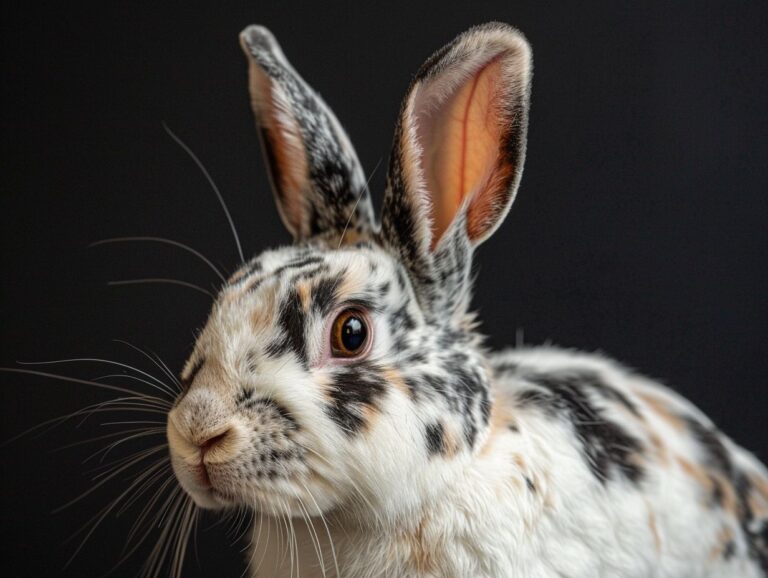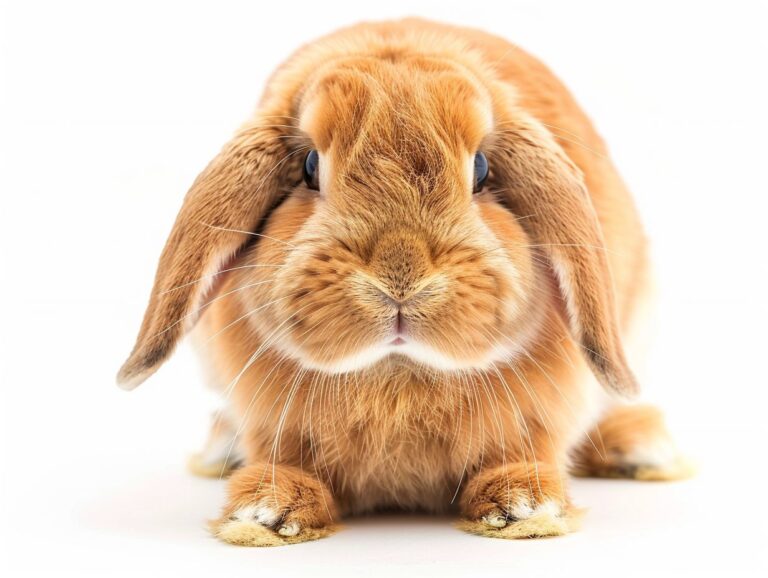Californian Rabbit Breed: Characteristics, Care, History, and Breeding Practices
Interested in learning more about the Californian rabbit breed?
This article covers everything you need to know about these beautiful rabbits, from their physical characteristics to their history.
Find out how to properly care for silver rabbit breed, including their ideal diet, housing requirements, grooming needs, and common health issues.
Explore the breeding practices for Californian rabbits, including the ideal breeding age, gestation period, care tips for pregnant and nursing rabbits, and considerations for selective breeding.
Read on to become an expert on Californian rabbits!
Key Takeaways:
What Is the Californian Rabbit Breed?
The Californian rabbit is a popular breed known for its distinctive appearance and friendly personality. Originating in California, United States, this breed is recognized for its unique markings and gentle demeanor.
Californian rabbits have medium to large size bodies with a striking white fur base and distinctive dark points on the nose, ears, feet, and tail, reminiscent of a Siamese cat. Their bright ruby eyes add to their charm and appeal. Known for their docile and sociable nature, these rabbits make excellent pets for families and individuals alike. Historically, the Californian breed was developed in the early 1920s by crossing a Himalayan buck with a Chinchilla doe, resulting in the creation of a breed with a luxurious fur coat and friendly temperament.
What Are the Physical Characteristics of Californian Rabbits?
Californian rabbits are known for their medium to large size with a distinctive fur pattern that transitions from dark to light colors, typically accompanied by bright red eyes. Their body type is robust and well-proportioned, reflecting their heritage.
These rabbits have a compact yet muscular build, giving them a strong and sturdy appearance. The fur of Californian rabbits is dense and plush, with a silky texture that is a delight to touch. Their eye-catching coat coloration consists of a dark-colored base that gradually lightens towards their underbelly and extremities, creating a stunning contrast. The fur’s glossy sheen enhances the overall beauty of these rabbits, highlighting their elegant features.
What Is the History of Californian Rabbits?
The history of Californian rabbits traces back to the early 20th century when George West developed the breed in California. By crossing Himalayan and Chinchilla rabbits, West created a new breed that was officially recognized by the American Rabbit Breeders Association (ARBA). The introduction of New Zealand genetics further enhanced the breed’s qualities.
George West, a prominent figure in the rabbit breeding community, meticulously selected and crossed Himalayan and Chinchilla rabbits to develop the distinctive Californian breed. The new breed’s striking appearance and excellent fur qualities quickly gained popularity among enthusiasts. With the addition of New Zealand genetics, the Californian rabbits exhibited superior growth rates and meat quality, cementing their status as versatile livestock animals. Today, due to their rich history and remarkable attributes, Californian rabbits remain prized members of the rabbit breeding world.
How to Care for Californian Rabbits?
Caring for Californian rabbits involves providing a balanced diet, spacious housing, regular grooming sessions, and attentive healthcare. Training these rabbits can also enhance their interaction with humans and overall well-being.
Regarding their diet, Californian rabbits thrive on a mix of high-quality hay, fresh vegetables, and a controlled amount of pellets. Adequate fresh water is a must to keep them hydrated.
For their housing, ensure a secure cage or hutch that allows ample space for them to hop around and stretch out. Regular grooming is essential to prevent matting and ensure cleanliness. Learn more about the Himalayan rabbit breed.
Learn more about the Alaskan rabbit breed for information on their characteristics, care, history, and breeding practices.
Watch out for common health issues like gastrointestinal problems and overgrown teeth that may require veterinary attention. Training these intelligent creatures can make them more responsive, affectionate, and playful, strengthening the bond between you and your furry companion.
What Is the Ideal Diet for Californian Rabbits?

Californian rabbits have specific nutritional requirements to maintain their health and energy levels. Fresh hay is crucial as it aids in digestion and provides essential fiber. Vegetables and fruits offer vitamins and minerals necessary for their growth and immunity.
Sherwood Pet Health Adult Rabbit Food provides a balanced blend of nutrients including protein, calcium, and vitamins. It’s important to monitor their food intake to avoid obesity or deficiencies. Water should always be readily available to keep them hydrated and assist in digestion.
What Are the Housing Requirements for Californian Rabbits?
Californian rabbits require a spacious hutch or enclosure that provides both indoor and outdoor space for exercise and exploration. Ensuring a safe and comfortable living environment is crucial for their well-being.
When considering the housing needs of Californian rabbits, it is important to keep in mind their natural habitat. These rabbits are active and curious creatures, so having a hutch that allows for plenty of movement and exploration is essential. Indoor accommodations should include areas for them to burrow and nest comfortably, while outdoor space should be predator-proof and equipped with hiding spots.
Regular exercise is vital for the physical and mental well-being of Californian rabbits. It helps prevent obesity and behavioral issues, such as boredom or aggression. Providing opportunities for exercise, such as tunnels, toys, and ramps, can enhance their quality of life and overall health.
What Are the Grooming Needs of Californian Rabbits?
Californian rabbits have grooming needs that include regular brushing to maintain their fur’s quality and prevent matting. Gentle handling and providing suitable toys can also contribute to their grooming routine.
Regular brushing is essential for Californian rabbits, as their dense fur can easily get tangled. It helps distribute natural oils, keeps their coat clean, and reduces shedding.
When handling these rabbits, it’s crucial to be gentle and calm to maintain their trust and prevent stress. Introducing various toys, such as tunnels, chew sticks, or puzzle feeders, can provide mental stimulation and prevent boredom, which is essential for their well-being. Enriching their environment with these toys can also help reduce destructive behaviors and promote physical activity.
What Are the Common Health Issues of Californian Rabbits?
Californian rabbits may be prone to certain health issues such as dental problems and obesity, which can impact their lifespan. Regular veterinary check-ups and a preventive care routine are essential for maintaining their health.
Dental problems in Californian rabbits can arise from their continuously growing teeth, requiring proper chewing material to prevent overgrowth.
Obesity is often a result of a poor diet or lack of exercise, increasing the risk of other medical concerns. A balanced diet rich in hay, vegetables, and limited pellets, along with regular exercise, can help manage weight. Consider the American rabbit breed for more insights into characteristics, care, history, and breeding practices.
Ensuring proper housing conditions and social interactions can promote mental well-being in rabbits, contributing to their overall health and longevity.
What Are the Breeding Practices for Californian Rabbits?
Breeding practices for Californian rabbits involve considerations such as the ideal breeding age, gestation period, care for pregnant and nursing rabbits, weaning steps for kits, and the principles of selective breeding to maintain breed standards.
One of the critical aspects of breeding Californian rabbits is determining the ideal breeding age. Typically, female rabbits can start breeding around 5 to 6 months of age, while male rabbits can be bred around 6 to 7 months. It is essential to ensure that rabbits are in good health and weight before breeding to prevent any complications during pregnancy.
What Is the Ideal Breeding Age for Californian Rabbits?

The ideal breeding age for Californian rabbits typically ranges from 5 to 8 months, ensuring that rabbits are physically mature and in optimal reproductive health before breeding.
It is crucial to wait until this age range to allow the rabbits to reach sexual maturity and develop fully before being introduced for breeding purposes. At this stage, the rabbits’ bodies are better equipped to handle the physical demands of reproduction, resulting in healthier litters and reduced risks of complications during pregnancy and delivery. By waiting for the appropriate age, breeders can also ensure that the rabbits are mentally prepared for the reproductive process, leading to better overall welfare and breeding outcomes.
What Are the Gestation Period and Litter Size of Californian Rabbits?
Californian rabbits have an average gestation period of 28 to 31 days, after which they can give birth to litters ranging from 5 to 10 kits. Understanding these reproductive aspects is essential for successful breeding.
During the gestation period, the female Californian rabbit prepares for the birth of the kits, with variations in the duration often influenced by factors such as the age and health of the mother. It is interesting to note that while the average gestation period falls within the 28 to 31-day range, individual rabbits may have slightly shorter or longer pregnancies.
Similarly, the litter size can vary significantly, with some rabbits giving birth to smaller litters of 5 kits, while others may produce larger litters of up to 10 kits. These variations play a crucial role in determining the breeding success and overall health of the rabbit population.
What Are the Care Tips for Pregnant and Nursing Californian Rabbits?
Pregnant and nursing Californian rabbits require special care, including a nutritious diet, a comfortable nesting area, and regular monitoring of the mother’s health and the kits’ development. Providing optimal support during these stages is crucial for the well-being of both the mother and offspring.
Diet plays a vital role in the health of pregnant and nursing rabbits. Ensuring they have access to fresh hay, vegetables, and a small amount of pellets rich in fiber and essential nutrients is essential. Additionally, hydration is key, so always provide clean, fresh water. For more information on the Chinchilla rabbit breed, including characteristics, care, history, and breeding practices, click here.
Nesting requirements are also critical; the mother should have a quiet, secluded space with soft bedding to build a secure nest. Monitoring the mother’s weight, behavior, and physical condition is fundamental to catch any health issues early. Regular veterinarian check-ups are highly recommended to ensure a smooth pregnancy and nursing period.
What Are the Steps for Properly Weaning Californian Rabbit Kits?
Properly weaning Californian rabbit kits involves a gradual transition from milk to solid food, typically starting around 4 to 6 weeks of age.
During this critical phase, it is advisable to introduce hay and pellets gradually to the kits’ diet, alongside their mother’s milk, to ensure a smooth dietary shift. It is recommended to begin by offering small amounts of pellets and hay alongside nursing sessions, gradually increasing the portion size. By around 8 weeks of age, most kits should have successfully transitioned to a diet consisting primarily of pellets and hay.
What Are the Considerations for Selective Breeding of Californian Rabbits?
Selective breeding of Californian rabbits requires careful considerations such as health assessments, genetic diversity preservation, and adherence to breed standards. Maintaining the breed’s overall health and vitality through selective breeding practices is essential for its long-term well-being.
When evaluating the health of breeding rabbits, it’s crucial to screen for common genetic disorders and ensure that only rabbits with optimal health are selected as breeding stock. Genetic diversity plays a significant role in preventing inbreeding depression and enhancing the overall vitality of the Californian rabbit population. Strict adherence to breed standards helps in preserving the distinctive characteristics that make the Californian rabbit unique. By following these principles, breeders can work towards producing healthier, more resilient, and genetically diverse Californian rabbits.
Frequently Asked Questions
What are the characteristics of the Californian Rabbit Breed?
The Californian Rabbit Breed is known for its distinctive white fur with dark points on its nose, ears, feet, and tail. They have a medium-sized, muscular body and weigh between 8-10 pounds. They have a calm and docile temperament, making them great pets.
How should I care for my Californian Rabbit Breed?
Californian Rabbits require a balanced diet of hay, vegetables, and pellets, as well as fresh water at all times. They also need regular grooming to maintain their soft fur. It is important to provide them with a spacious enclosure and plenty of exercise to keep them happy and healthy.
What is the history of the Californian Rabbit Breed?
The Californian Rabbit Breed was developed in California in the 1920s by crossing Himalayan and Chinchilla breeds. They were originally bred for their meat and fur, but later gained popularity as show and pet rabbits. They were recognized as an official breed by the American Rabbit Breeders Association in 1939.
What are some important breeding practices for Californian Rabbits?
Breeding Californian Rabbits requires careful selection of healthy and genetically diverse parents. It is important to provide a clean and stress-free environment for the rabbits during the breeding process. Careful monitoring and proper nutrition are also crucial for the health of the mother and her offspring.
At what age can Californian Rabbits start breeding?
Californian Rabbits can start breeding around 6-8 months of age. It is recommended to wait until they are at least a year old before breeding to ensure they are physically and emotionally mature enough for the process.
Can I show my Californian Rabbit Breed in competitions?
Yes, Californian Rabbits are a recognized breed by the American Rabbit Breeders Association and can compete in rabbit shows. It is important to follow the breed standard for appearance and temperament in order to be successful in competitions.

